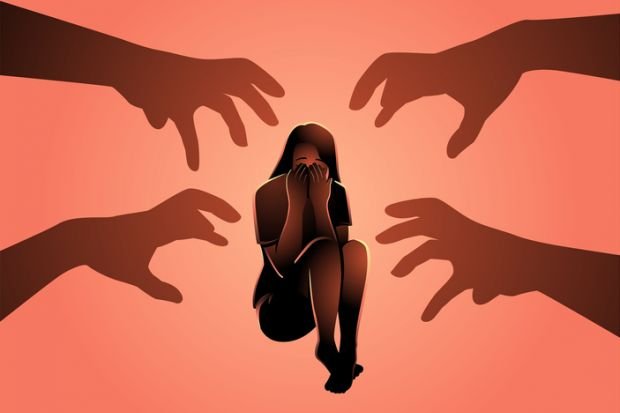In recent years, the world has witnessed an alarming rise in sexual violence, with cases that are both shocking and heartbreaking.
The brutal murder of six-year-old Zainab Ansari in Pakistan and the tragic killing on 9 August 2024, Moumita Debnath, a second-year postgraduate trainee doctor at R. G. Kar Medical College and Hospital in Kolkata are just two harrowing examples.
These incidents are not isolated; they are part of a growing problem that we, as a global society, cannot afford to ignore.
A Global Crisis: The Alarming Statistics
Sexual violence is a widespread problem that affects every corner of the world.
According to the World Health Organization (WHO), one in three women worldwide has experienced physical or sexual intimate partner violence or non-partner sexual violence in her lifetime.
In India alone, official figures report about 32,000 rape cases annually, although experts believe the actual number is much higher due to under-reporting and social stigma.
In Pakistan, the statistics are just as grim, with an estimated 11 rapes reported daily, and again, many more cases go unreported.
The story of Zainab Ansari, a six-year-old girl from Kasur, Pakistan, who was kidnapped, raped and murdered in 2018, shocked the nation and the world.
Her case sparked outrage and brought attention to the issue of child sexual abuse, but despite public outcry, similar incidents continue to occur with alarming frequency.
Similarly, the murder of a young trainee doctor in Kolkata, India, illustrates the vulnerability of women even in professional and supposedly safe environments.
The doctor-in-training was described as a horrific act of sexual violence, a stark reminder of the dangers women faces every day, regardless of their status or position.
Root Causes: What Fuels the Epidemic?
According to Indian YouTuber and social activist Dhruv Rathee, several factors contribute to the increasing number of rape cases:
1. Media Influence: Movies like Animal, Kabir Singh, and 50 Shades of Grey have been criticized for romanticizing toxic masculinity and trivializing sexual violence. Such portrayals contribute to a culture where abusive behavior is normalized, and the gravity of rape is downplayed.
2. Access to Cheap and Vulgar Content on the Internet: The proliferation of online content that objectifies women and trivializes rape plays a significant role in normalizing sexual violence. When young men consume such content, it desensitizes them to the seriousness of rape and encourages a distorted view of women and sex.
3. Patriarchal Mindset: A deeply ingrained patriarchal mindset that views women as subordinate to men is a significant factor in the prevalence of sexual violence. This mindset perpetuates the idea that men are entitled to control and dominate women, leading to acts of violence when this perceived entitlement is challenged.
4. Victim Blaming: In many societies, rape victims are often blamed for the crime committed against them. This victim-blaming culture not only discourages victims from coming forward but also perpetuates the idea that women are responsible for preventing their own assault, rather than holding perpetrators accountable.
Turning the Tide: How Can We Stop the Epidemic?
To address the issue of rape and sexual violence, a multi-faceted approach is necessary:
1. Education and Awareness: Comprehensive sex education that emphasizes consent and respect for women is crucial. Teaching young people about healthy relationships and the importance of mutual respect can help prevent sexual violence from occurring in the first place.
2. Strict Enforcement of Laws: Governments must ensure that laws against sexual violence are strictly enforced and that perpetrators are held accountable. This includes providing support for victims and ensuring that they have access to justice without fear of retribution.
3. Challenging Patriarchal Norms: Societal attitudes towards women must change. This involves challenging and dismantling patriarchal norms that devalue women and perpetuate violence against them. Encouraging gender equality and promoting women’s rights are essential steps in this process.
4. Responsible Media Representation: The media, including movies, television, and online platforms, must be held accountable for how they portray women and sexual violence. Content creators should be encouraged to depict women in a way that is empowering and respectful, rather than objectifying and demeaning.
5. Support for Victims: It is essential to create an environment where victims of sexual violence feel supported and are not stigmatized. This includes providing access to mental health services, legal assistance, and safe spaces where they can share their experiences without fear of judgment.
Conclusion: A Call to Action
The harrowing cases of Zainab Ansari and the trainee doctor in Kolkata are not isolated incidents but symptoms of a larger, more pervasive problem—one that demands urgent and collective action.
As Dhruv Rathee rightly points out, factors like the proliferation of vulgar content online, a deeply entrenched patriarchal mindset, irresponsible media portrayals, and victim-blaming all contribute to the alarming rise in sexual violence.
To combat this epidemic, we must first recognize the systemic issues at play.
Education, awareness, and the dismantling of harmful cultural norms are crucial steps toward creating a society where respect and equality prevail.
Media representation needs to shift towards empowering narratives, and laws must be enforced rigorously to deter potential offenders.
Most importantly, we must foster an environment where victims feel supported, and their voices are heard, rather than silenced or blamed.
Sexual violence is not an issue that can be ignored or sidelined.
It demands our unwavering attention and commitment to change.
As a global community, we must not lose interest by then, for every day we delay action, more lives are put at risk.
The time to act is now, and it begins with each of us taking responsibility for the culture we create and the values we uphold.

One thought on “Don’t lose interest by then: Confronting the growing epidemic of sexual violence”
Good job